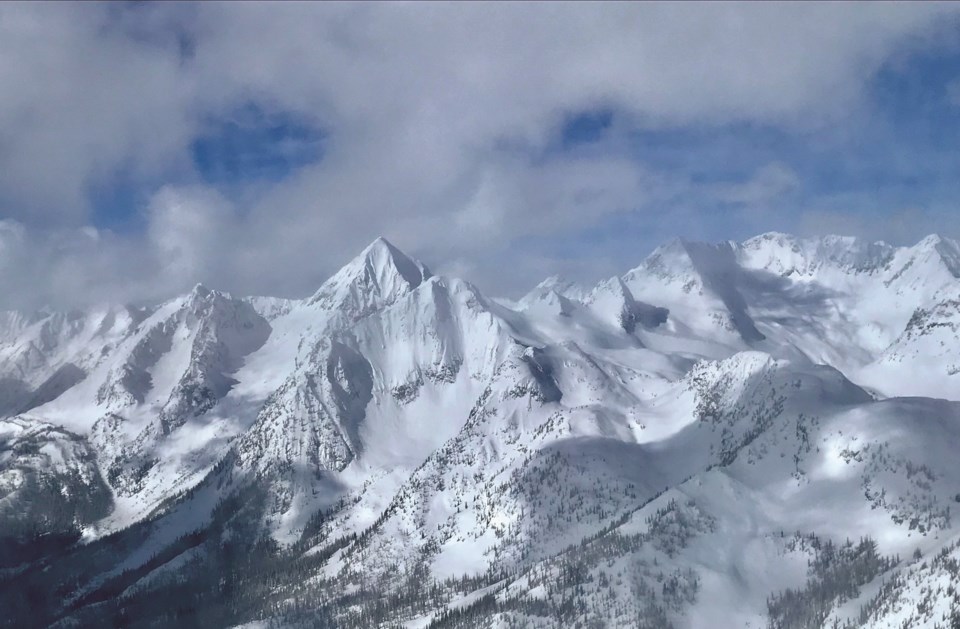Few in B.C. ski circles could claim to be unaware of the decades-long drama concerning the cancelled Jumbo Glacier four-seasons, mega-resort. But where the bloated, ill-thought-out, ironically named Jumbo development would have imposed a massive environmentally and economically unsound footprint in remote mountains, the opposite appears to be the case with a more recent initiative. The Zincton Project is a small-footprint, forward-thinking, backcountry-oriented, economically sensible, environmentally sound, all-season ski and mountain bike area proposed for the Goat Pass area of the Selkirk Mountains. The closest analogy would be the Silverton Ski Area in Colorado—a one-lift backcountry ski experience.
The old mining corridor between New Denver and Kaslo in which the project is located was busy a century ago, and a string of abandoned towns that include Cody, Zincton, Nashton, Three Forks, Retallack and Sandon (which itself once contained 5,000 miners and their families) have earned it the moniker, Valley of Ghosts. But there’s another ghost here—environmental contamination—that the Zincton Project actually looks to clean up as a way of enhancing wildlife habitat. If that doesn’t square the circle on typical ski developments, it’s hard to imagine what does.
The Zincton Project looks to provide a range of winter ski experiences across six sectors. The first, a 2,500-acre Lift-Serviced Zone, would see skiers utilize chairlifts to access a modest 20 per cent of the proposed tenure at its western end—public lands adjacent to a privately held parcel that would contain the small, sustainably functioning Zincton Mountain Village. The remaining 80 per cent of the tenure comprises five Backcountry Zones that would offer a range of human-powered ski experiences, from glades to open bowls and high-mountain couloirs. To make such an enormous wilderness area safer, emergency shelters would be installed and a backcountry insurance provider engaged to relieve potential strain on local search and rescue. Summer would see hiking and mountain biking on lower-altitude trails; in collaboration with existing operators and the Goat Pass community, pre-existing alpine mountain bike trails would be decommissioned and a 10,000-acre summertime Wildlife Corridor Protection Zone established.
The idea originates with long-time New Denver resident David Harley, who has skied the area since the 1970s and comes with serious cred in the outdoor industry, having launched FarWest apparel in Vernon before starting Valhalla Pure Outfitters. He spoke about his vision in a virtual open house held in October by the government’s Mountain Resorts Branch that also included a significant Whistler component of resort-planning and environmental expertise in Brent Harley of Brent Harley and Associates and Cascade Environmental’s Dave Williamson. During the forum, David Harley said he hopes Zincton will be a breakout example of an ultra-low-impact ski village that can seamlessly blend traditional lift-serviced recreation with extensive and accessible backcountry. The project would demand no free land, subsidies, roads, or power lines. It would also be climate-neutral from Day 1, as well as provide a few hundred local jobs to an economically stressed region. Harley went on to explain how Zincton intends to make the environment better than they find it, funding remediation of toxic surface mine wastes by partnering with 1% for the Planet and a new NGO—the Zincton Institute—that would monitor progress in revitalizing habitat in the proposed seasonal wildlife migration corridor.
Naturally—and fairly, given the history of developers in B.C.—there is some concern with regard to potential wildlife impacts. Although this legitimate question is top of mind and well addressed by the Zincton group, the websites of some environmental groups I visited seemed to mischaracterize the project in order to garner opposition in the government comment period that ended Nov. 23. In the open house, Williamson answered questions about the impact on resident wildlife by noting that the idea was to avoid interaction with wildlife and manage the activities that take place on the landscape. “We believe that is still the best tool in the quiver,” he said, pointing to the proponents’ plan for spatial and seasonal closures during periods when wildlife was occupying an area.
With regard to the environmental concern of carbon-neutrality, the resort would be powered by historic Silversmith Power and Light in Sandon (in which Nikola Tesla, no less, had a hand in design), which has operated since 1897 and was officially certified green in 1999. The plan also includes running EV buses between Kaslo and New Denver; this would eliminate most commuter ski traffic and its carbon, and encourage local kids to ski more often. Backcountry skiers could catch an EV bus back to the base and lifts at designated stops.
The services and experiences available in Zincton Mountain Village would be complemented by an affordable and inclusive (open to everyone) remote wilderness backcountry lodge located on London Ridge. Harley noted that while Goat Pass currently serves both heli-ski and cat-ski tenures whose daily cost of $1,000 to $2,000 largely excludes local use, approval of Zincton would preserve at least some of Goat Pass for locals. “In the winter the idea is for the entire tenure area to remain open to human-powered recreational activities at no cost from the Fish Lake parking area and Murray Creek,” he said.
Perhaps best of all, even at full buildout, Zincton would cap visitation at 1,200 skiers per day—900 in the Lift-Serviced Zone and only 300 in the Backcountry Zones—virtually ghost-like slopes in the Valley of Ghosts.
Will the idea fly? Who knows, but at least this one has wings.
Leslie Anthony is a Whistler-based author, editor, biologist and bon vivant who has never met a mountain he didn’t like.




